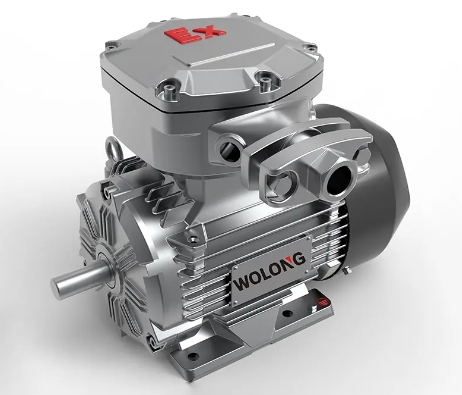1 Three-phase asynchronous motors
It is an electric machine for industrial use, with a power range from a few watts to tens of thousands of kilowatts, and has a wide range of applications. Mainly used in fans, pumps, compressors, machine tools, light industry and mining machinery, agricultural production in the threshing machine and crusher, agricultural by-products in the processing machinery and so on.
Its advantages are simple structure, easy to manufacture, low price, reliable operation, ruggedness, high operating efficiency, the rotor is cast aluminum, the design is less difficult, the industry chain is mature, as well as complete specifications and so on. The disadvantage is that the power factor is poor, always less than 1; can not yet economically smooth speed regulation in a wide range.
Therefore, the traditional application of three-phase asynchronous motors is in the fixed-speed occasions, but now more and more three-phase asynchronous motor application is with the frequency converter (VFD), or variable speed drive to use. VFD can be used to adjust the output voltage to match the frequency, and if applied to centrifugal fans, pumps, or compressors, they can be used in conjunction with induction motors to achieve energy savings.
Currently, energy-efficient three-phase asynchronous motors of IE4 and above are available in the YE4, YE5 series, and so on. This means that there is a need to develop the YE4 and YE5 series of three-phase asynchronous motors.

2 Three-phase asynchronous motors with cast copper rotors
It is actually a kind of three-phase asynchronous motor, but the rotor is changed to cast copper, because the resistivity of copper is lower than the resistivity of aluminum, so it will reduce the resistance of the rotor, which will reduce the rotor loss, to achieve the purpose of improving the efficiency of the motor.
But it also brings a problem, that is, there are higher requirements for the casting process and equipment. At present, the cast copper rotor three-phase asynchronous motor above IE4 standard has YZTE4 series and so on.
3 Self-starting permanent magnet synchronous motor
The characteristic of the motor is that the rotor is cast aluminum or copper bar welding, the design is difficult, the industrial chain is relatively mature, the cost is high, and the specifications are complete. The disadvantage is that the starting impact is large and the speed cannot be adjusted.
At present, the IE4 standard motor of this series is TYE4 series self-starting permanent magnet synchronous motor.
4 Variable frequency speed regulating permanent magnet synchronous motor
We often say BLDC motor. It is characterized by a rotor without guide bar but a permanent magnet, the biggest advantage is maintenance-free, high efficiency, general design difficulty, the industry chain is relatively mature, complete specifications, but because of the need to configure the controller, so the cost is relatively high, poor economy.
5 Synchronous reluctance motor
The rotor is composed of ferromagnetic materials and non-ferromagnetic materials, no permanent magnets, no winding, is one of the simplest structure of the motor.
Synchronous reluctance motors can produce high power density at low cost, and combine the performance of permanent magnet synchronous motors with the ease of use and easy maintenance of induction motors, making them attractive in many applications.
In addition, the control strategy of synchronous reluctance motor is very similar to that of permanent magnet synchronous motor, and the vector control and direct torque control strategies commonly used in permanent magnet synchronous motor can be adopted.
Although the design of synchronous reluctance motors is more difficult, it can meet IE4 and even IE5 standards relatively easily.
Post time: Jul-15-2024





